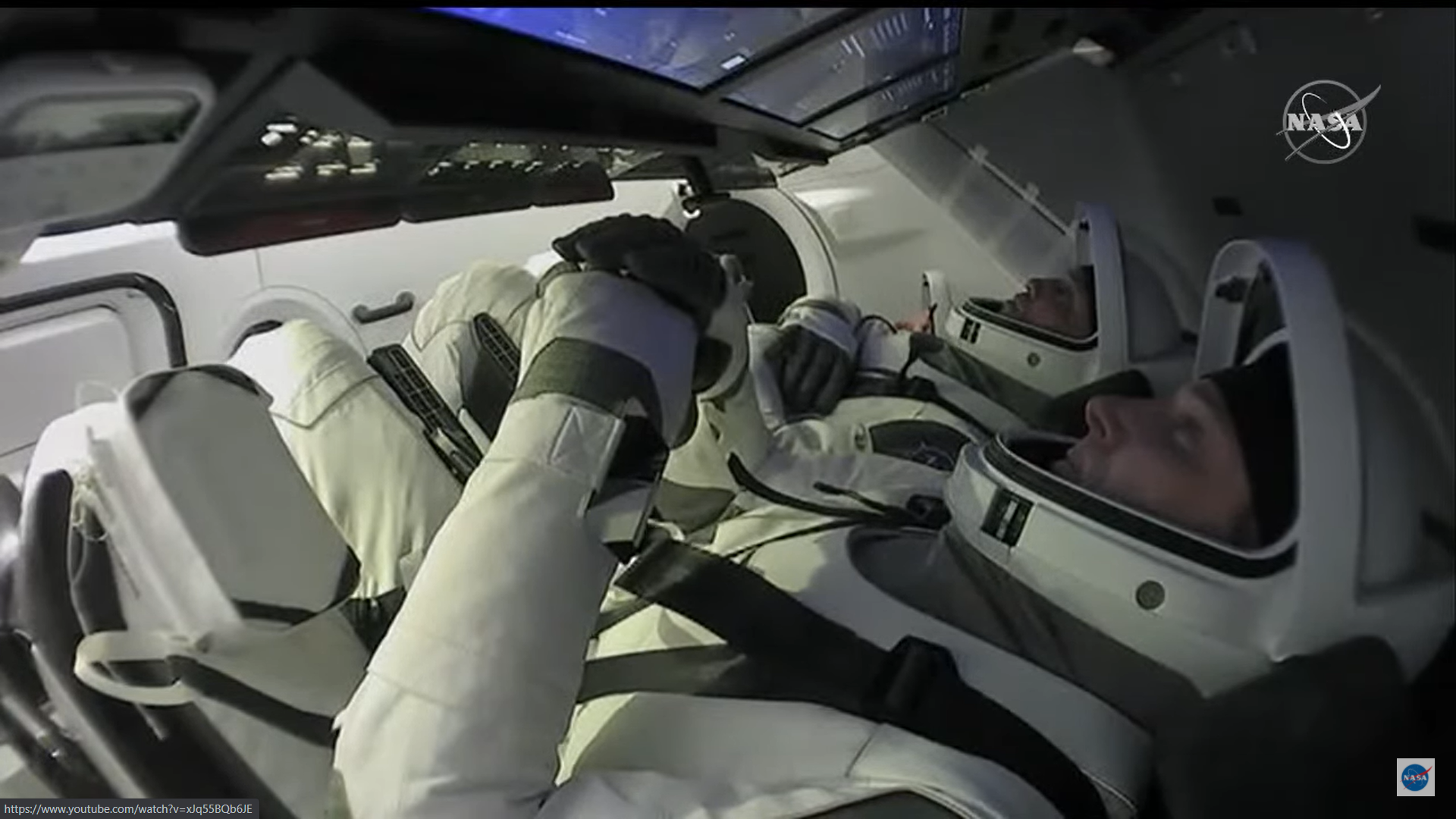Astronauts move SpaceX capsule to new docking port for 1st time ahead of space station crew arrivals
The SpaceX Crew-1 astronauts were the first to relocate a Crew Dragon spacecraft.
NASA's SpaceX Crew-1 astronauts completed the first commercial crew port relocation at the International Space Station on Monday (April 5), as they moved the Crew Dragon spacecraft in preparation for the arrival of the next crew.
The relocation was performed by NASA astronauts Michael Hopkins, Victor Glover and Shannon Walker, along with Japan Aerospace Exploration Agency (JAXA) astronaut Soichi Noguchi. The crew undocked the Crew Dragon, nicknamed Resilience, from the forward port of the space station's Harmony module at 6:30 a.m. EDT (1030 a.m. GMT) and reconnected to the module's space-facing port at 7:08 a.m. EDT (1108 GMT).
The astronauts moved Resilience to a different port on the space station to make room for an incoming Crew Dragon spacecraft arriving later this month, named Endeavour, which will dock at Harmony's forward port. The arriving SpaceX Crew-2 mission includes NASA astronauts Shane Kimbrough and Megan McArthur, JAXA astronaut Akihiko Hoshide, and European Space Agency (ESA) astronaut Thomas Pesquet. The crew is scheduled to launch to the space station on April 22 from Launch Complex 39A at NASA's Kennedy Space Center in Florida.
Related: Meet Crew-1: These are the 4 astronauts who are flying on SpaceX's Crew Dragon

"We're very excited about [moving Resilience] and we'd like to say congratulations on behalf of the whole Expedition 64 team as well as the Crew-1 Dragon team. Congratulations to the commercial crew program for 10 years. What an amazing 10 years it has been," Hopkins said during a call with Steve Stich, NASA Commercial Crew Program manager, from the space station on Friday (April 2). "To think about where you started and where we are now — and now we're getting ready to actually take this vehicle out for a little spin. … We're all very excited to be a part of it."
On March 19, NASA astronaut Kate Rubins, along with two Russian cosmonauts Sergey Ryzhikov and Sergey Kud-Sverchkov, relocated the Soyuz MS-17 spacecraft from the Earth-facing port of the station's Rassvet module to the space-facing Poisk port. However, unlike the Soyuz relocation maneuver, which required manual flying, the Crew Dragon is operated autonomously.
"It's pretty cool and it is quite an amazing view to separate from your vehicle that's been your home for months and to be able to look at it from 60 meters [about 200 feet]," Rubins said during the call from the space station, which NASA shared on YouTube Friday (April 2).
Get the Space.com Newsletter
Breaking space news, the latest updates on rocket launches, skywatching events and more!

In preparation for Monday's relocation, Hopkins said he would be spending his Easter Sunday making sure he cleaned everything out of the Crew Dragon spacecraft — his version of an Easter egg hunt, since he had been staying in Resilience for the last couple of months, he said during the call.
The spacecraft has been "largely quiescent" since the SpaceX Crew-1 astronauts arrived at the space station on Nov. 16. Therefore, the crew prepared for the move by verifying that Resilience's communication systems were up and running, and completing suit fit checks, which Hopkins said "went very well" during the call.
Crew-1 is scheduled to return to Earth in late April or early May, leaving the space-facing port of Harmony vacant for when a Dragon cargo spacecraft arrives with supplies and the first set of new solar arrays for the space station later this summer. Rubins and Glover began preparing the space station for the new solar arrays during a spacewalk on Feb. 28, when they installed one of two modification kits that are needed to support the new arrays. The Dragon cargo spacecraft will need to dock at the space-facing port to allow for robotic extraction of the new solar arrays from Dragon's trunk using Canadarm2, according to a statement from NASA.
While today's relocation maneuver was the first time a Crew Dragon spacecraft needed to be moved, it likely won't be the last, given the Crew-1 mission is the first of six certified crew missions NASA and SpaceX have planned as a part of the agency's Commercial Crew Program, according to the statement.
Follow Samantha Mathewson @Sam_Ashley13. Follow us on Twitter @Spacedotcom and on Facebook.
Join our Space Forums to keep talking space on the latest missions, night sky and more! And if you have a news tip, correction or comment, let us know at: community@space.com.

Samantha Mathewson joined Space.com as an intern in the summer of 2016. She received a B.A. in Journalism and Environmental Science at the University of New Haven, in Connecticut. Previously, her work has been published in Nature World News. When not writing or reading about science, Samantha enjoys traveling to new places and taking photos! You can follow her on Twitter @Sam_Ashley13.









